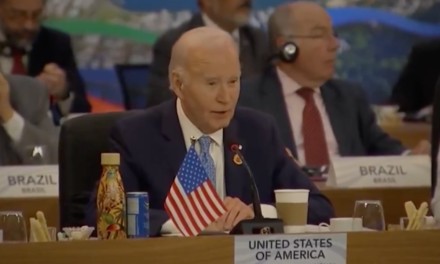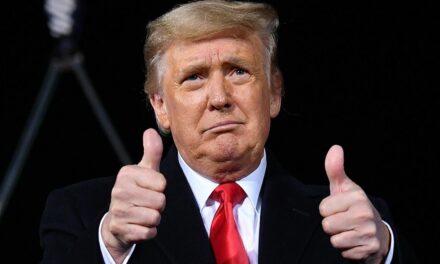We support our Publishers and Content Creators. You can view this story on their website by CLICKING HERE.
A recent Reuters article highlights the White House’s claims of over $1 trillion in economic investments attributed to President Biden’s legislative initiatives, such as the Bipartisan Infrastructure Law, CHIPS and Science Act, and the Inflation Reduction Act.
These investments target semiconductors, clean energy, and infrastructure, with the administration touting them as transformative for job creation and domestic manufacturing. However, beneath these lofty claims lies a stark economic reality: growing public skepticism over Biden-era policies, rising costs for American families, and worsening economic fundamentals. This sets the stage for President-elect Donald Trump’s return to the White House and a recalibration of U.S. economic priorities.
While the Biden administration points to its legislative wins, the outcomes paint a different picture. Despite the promise of economic transformation, the real-world impact has been marred by skyrocketing inflation, supply chain disruptions, and energy insecurity.
1. Inflation and Cost of Living:
Inflation has consistently outpaced wage growth, eroding the purchasing power of American families. Essentials like groceries, gas, and housing have reached record-high prices. The Inflation Reduction Act has done little to curb these trends, focusing instead on subsidies for clean energy projects that critics say disproportionately benefit corporations over working Americans.
2. Energy Policy Failures:
Biden’s pivot to green energy has led to a decline in U.S. energy independence. Policies that restrict oil and gas exploration have driven up energy costs for households and businesses, making the U.S. more reliant on foreign energy imports—a sharp reversal from the Trump administration’s energy dominance.
3. Manufacturing Exodus:
Despite promises to boost manufacturing, key industries continue to struggle with labor shortages and increased production costs due to overregulation. U.S. companies face mounting competition from foreign entities, particularly in sectors like automotive and technology, where Biden’s policies have failed to create a level playing field.
4. Globalist Agendas Over Domestic Priorities:
Biden’s focus on global climate goals and international agreements has alienated voters who feel these priorities come at the expense of local jobs and industries. The administration’s regulatory overreach has created an environment where businesses struggle to compete, leading to layoffs and closures in key sectors.
Trump’s America-First Economic Revival
President-elect Donald Trump is poised to reverse these missteps with a renewed focus on policies that put American workers and businesses first. His economic strategy includes:
• Tariffs on Foreign Competitors: Protecting U.S. industries from unfair trade practices by implementing targeted tariffs, ensuring a competitive advantage for domestic manufacturers.
• Energy Independence: Expanding domestic energy production to lower costs for consumers and reduce reliance on foreign powers. Trump’s administration previously achieved energy independence, which translated into lower prices and more stable markets.
• Job Creation and Wage Growth: Fostering an environment for small businesses to thrive by reducing red tape and cutting taxes, spurring job creation and wage increases across the board.
• Infrastructure That Works: Unlike Biden’s focus on green energy infrastructure, Trump aims to direct funding toward rebuilding roads, bridges, and other critical projects that directly benefit everyday Americans.
Restoring Economic Confidence
The recent elections underscore the growing public demand for economic policies that deliver measurable results. Trump’s prior achievements, such as record-low unemployment, strong GDP growth, and historic wage increases, give voters confidence in his ability to turn the economy around.
Biden’s reliance on government spending and subsidies has not addressed the root causes of economic instability. Trump’s focus on market-driven solutions, reduced regulation, and fiscal responsibility aims to restore trust in American leadership and lay the foundation for sustained prosperity.
Conclusion
The Biden administration’s trillion-dollar claims fail to account for the economic struggles still facing American families. From high inflation to energy dependence and an uncompetitive manufacturing sector, the shortcomings of Biden-era policies have left voters disillusioned.
President-elect Trump’s return signals a decisive shift toward pragmatic, results-oriented leadership.
With a proven track record of delivering economic growth, Trump’s policies promise to strengthen America’s economic foundation, prioritize domestic interests, and create opportunities for all Americans. As the nation looks ahead, the promise of an America-first economy offers renewed hope for a prosperous future.
About The Author

 Conservative
Conservative  Search
Search Trending
Trending Current News
Current News 





